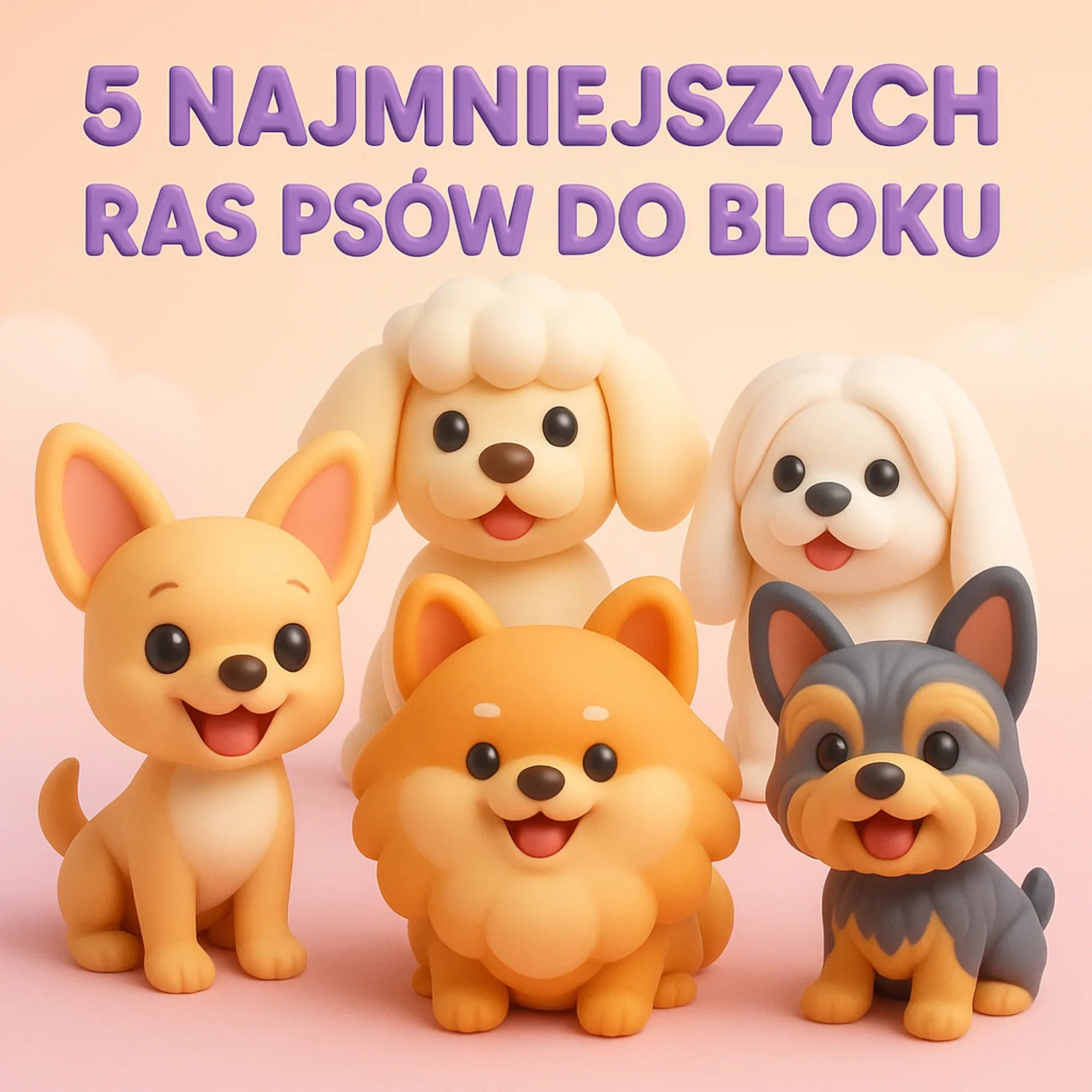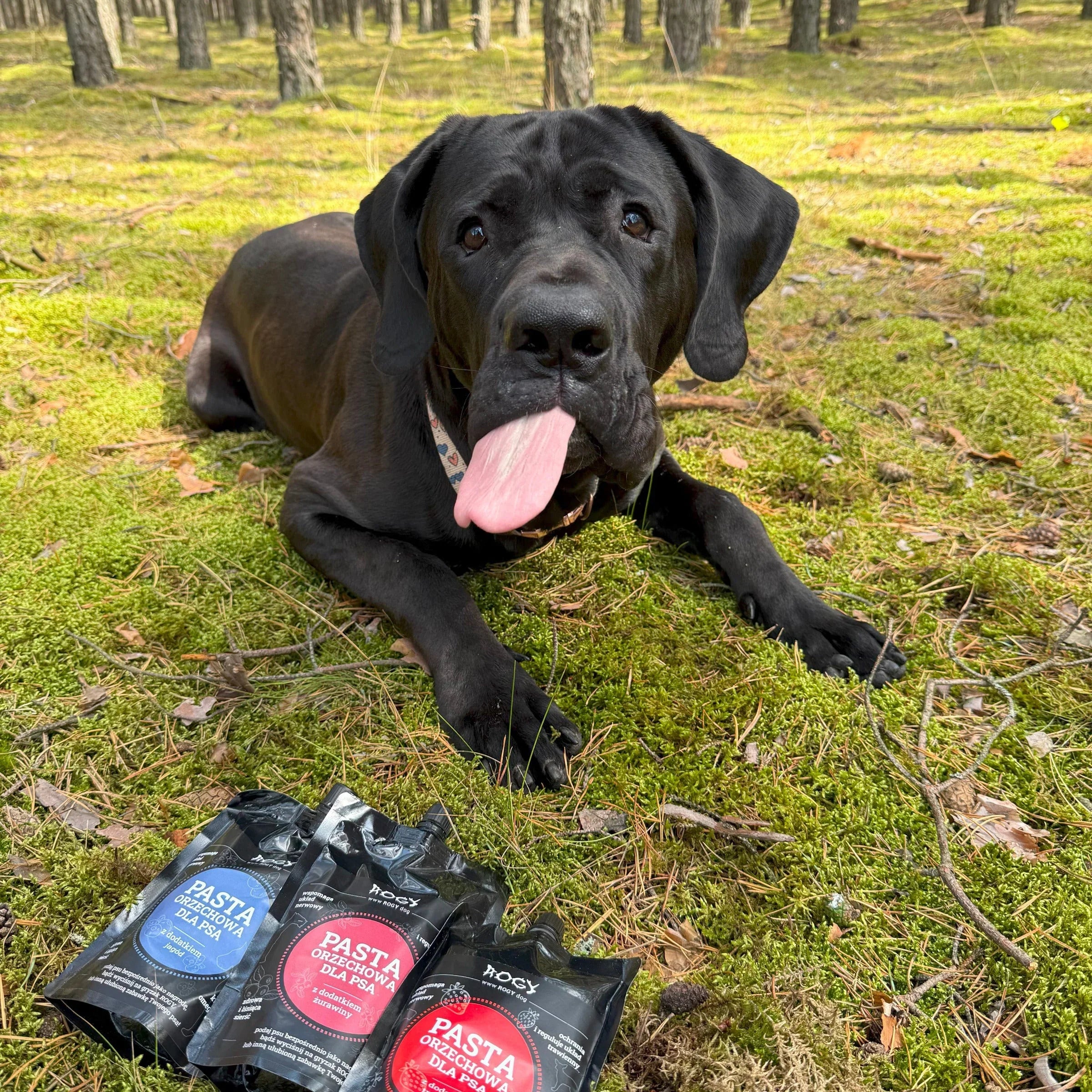
5 Smallest Dog Breeds That Are Perfect for Apartment Living
Living in an apartment building doesn't have to mean giving up your dream of a canine companion. On the contrary, some breeds are simply born to live in small spaces. Discover the 5 smallest dog breeds that will not only fit on your lap but also thrive in the rhythm of city life.
At first glance, it might seem that owning a dog is a luxury reserved for homeowners with gardens. However, reality shows that apartment dwellers are increasingly opting for a four-legged companion—and for good reason. In an era of remote work and the growing need for closeness and contact with nature, a dog becomes not only a friend but also a remedy for the daily stresses of city life.
In this article, we present five of the smallest dog breeds that not only fit into the apartment complex, but actually adore it. Thanks to their size, temperament, and relationship with people, these breeds thrive within the confines of four walls, elevators, and the hustle and bustle of the city. If you dream of a dog that brings joy, not chaos, into your life, this guide is for you.
Small dog = big personality
They say small breed dogs make up for their size with personality. And indeed, although they're only a few inches tall, they can captivate entire neighborhoods. They're friendly, adaptable, loyal, and often surprisingly intelligent. Their small size makes them ideal for apartment buildings—they don't require much space, and their exercise needs can be met with short walks.
What makes a dog suitable for apartment living?
Size isn't the only factor. The ideal apartment dog should:
- be calm and balanced – excessive barking can be a nuisance to neighbors,
- have low physical needs – the lack of a garden is compensated by the need for moderate activity,
- easily adapt to urban conditions – including elevators, noise and people,
- be gentle towards children and strangers – especially important in the block community.
1. Chihuahua – the smallest dog in the world

Weight: 1–3 kg
Height at the withers: 15–23 cm
Lifespan: 14–17 years
Characteristic:
The Chihuahua is a true microdog – the smallest member of the canine world, yet with a personality often greater than that of dogs ten times its size. It's lively, devoted to a single owner, and extremely alert. It can be a joyful family member or a feisty watchdog.
Why will it work well in an apartment?
- It is very small – perfect for studios and small apartments,
- Has low exercise needs – a few short walks a day are enough,
- He likes warmth and a calm atmosphere – he feels great on the couch under a blanket,
- It travels well in a carrier or bag, making city life easier.
Potential challenges:
- Can be barking and overprotective – requires socialization from puppyhood,
- He doesn't like the cold - on cold days he needs clothes and shorter walks,
- Delicate build – care must be taken when playing with small children.
Fun fact:
The Chihuahua originated in Mexico and likely descended from ancient companion dogs of the Toltec tribe. Their presence in pre-Columbian tombs suggests they had ritual significance and were considered sacred animals.
2. Pomeranian – the little living lion

Weight: 2–3.5 kg
Height at the withers: 18–22 cm
Lifespan: 12–16 years
Characteristic:
The Pomeranian, also known as the Pomeranian, is a fluffy ball of joy. With a lush coat, a high tail, and constant energy, they love being the center of attention and thrive in the company of people.
This highly intelligent breed learns quickly and loves various forms of activity—both physical and mental. Thanks to its small size, it thrives in apartments, even very small ones.
Why will it work well in an apartment?
- Its small size and activity inside the house means it does not require a large space,
- Likes human contact – a great choice for people who spend a lot of time at home,
- Cheerful and sociable – the perfect companion for singles and families.
Potential challenges:
- Thick fur requires regular brushing and care,
- He can be loud and alert – it is worth investing in calming down training,
- Sometimes too confident – you need to ensure proper socialization.
Fun fact:
The Pomeranian was a favorite breed of Queen Victoria, who owned several of them. It was thanks to her that these dogs gained immense popularity in Europe.
3. Yorkshire Terrier – a miniature gentleman

Weight: 2–3.5 kg
Height at the withers: 18–23 cm
Lifespan: 12–15 years
Characteristic:
The Yorkie is a classy dog, known for its silky fur and bold personality. Although it may look like a delicate mascot, it is actually an alert, energetic, and loyal companion. Its temperament makes it a perfect fit for the hustle and bustle of city life.
Yorkies are highly intelligent and trainable, though they can be stubborn. This dog is perfect for those seeking not just a pet, but a true everyday companion.
Why will it work well in an apartment?
- He is very attached to his owner – he is a typical companion dog,
- He likes warmth and the comfort of home,
- Thanks to its small size, it does not require much space.
Potential challenges:
- Requires regular care – its fur grows like human hair,
- Can be possessive and dominant – needs clear rules,
- He sometimes barks – it is worth working on his emotions.
Fun fact:
The Yorkshire Terrier was originally used to catch rats in mines and factories – a feat hard to imagine today, given its salon elegance.
4. Maltese – the white angel of the apartment

Weight: 3–4 kg
Height at the withers: 20–25 cm
Lifespan: 13–16 years
Characteristic:
The Maltese is a breed born to live among humans. It is gentle, affectionate, intelligent, and surprisingly hardy for its size. Its snow-white, silky fur is a hallmark of this breed.
They're an ideal family dog, but also a great companion for singles and seniors. Maltese dogs thrive in apartments, being quiet, gentle, and very easy to live with.
Why will it work well in an apartment?
- Small, light, easy to carry and travel with,
- Doesn't need much activity - short walks are enough,
- Calm and unobtrusive – tolerates silence and home conditions very well.
Potential challenges:
- The fur requires regular care – especially around the eyes,
- He doesn't like long periods of solitude - he doesn't tolerate the lack of human contact well,
- May be sensitive to noise and environmental changes.
Fun fact:
Maltese were already known in ancient times – their images can be found on Greek vases dating back over 2,000 years.
5. Toy Poodle – elegance and intelligence on a micro scale

Weight: 2.5–4.5 kg
Height at the withers: 24–28 cm
Lifespan: 12–15 years
Characteristic:
The Toy Poodle is the smallest member of the Poodle family, combining grace, intelligence, and loyalty. It loves human contact, learns quickly, and thrives in a home environment. It's often chosen by seniors and allergy sufferers.
Why will it work well in an apartment?
- He is quiet by nature and does not disturb the neighbors,
- It works great in urban conditions and small spaces,
- He loves educational games that can be done at home.
Potential challenges:
- Requires regular cutting and care,
- I need a daily dose of mental activity,
- May not tolerate loneliness well if left alone for too long.
Fun fact:
Toy Poodles were often circus dogs – their incredible memory, jumping ability and stage charm attracted crowds of spectators for centuries.
Summary
If you dream of a dog but live in an apartment, you don't have to give up on your dreams. Chihuahuas, Pomeranians, Yorkshire Terriers, Maltese, and Toy Poodles are excellent examples of breeds that thrive in small spaces. Each of these breeds has slightly different temperaments, needs, and personalities, but they all have one thing in common: they thrive alongside humans.
What makes them ideal companions isn't just their size, but also their adaptability, need for closeness, and often surprising intelligence. Although they may be small in stature, they often display the traits of larger dogs: loyalty, courage, alertness, and the ability to form deep emotional bonds with their owners. It's these traits that make living with them in an apartment not only possible but also full of charm, warmth, and daily joy.
When choosing a dog for your apartment, remember to match the breed not only to the living conditions but also to your own lifestyle. Some of the dogs described above are better at being left alone, others require more attention. Some are hypoallergenic, others require frequent brushing. A well-considered choice guarantees a harmonious life with your pet – a happy, healthy, and fulfilled dog and a contented, calm owner.
Regardless of which breed you choose, the most important thing is one thing: a dog in an apartment can be just as happy as one in the countryside – if you give it your heart, time and responsible care.
FAQ – frequently asked questions
Can a dog in an apartment be happy?
Yes – provided they have access to walks, attention, and safety. For a dog, what happens in their daily life is more important than their size.
Which small breed tolerates loneliness best?
Toy Poodles and Yorkshire Terriers are more independent, but each breed needs contact with their caregiver—the solitude shouldn't last too long. If you leave the house frequently, consider hiring a pet sitter or purchasing an interactive camera.
Does a small dog mean fewer responsibilities?
Not always. Although they eat less and take up less space, some breeds (e.g., Maltese, Pomeranian) require intensive grooming. Some breeds, on the other hand, are more prone to separation anxiety.
Can these dogs be transported in a carrier?
Yes, all of the breeds mentioned are perfect for a carrier or a special dog car seat. Remember to secure them during car travel.
Do small dogs need training?
Absolutely. Small size doesn't mean a dog can't be problematic. Basic obedience and bark control training are essential for a peaceful apartment life.
What accessories are worth having in an apartment with a small dog?
A bed, non-slip bowls, moisture-absorbing mats (for puppies), a carrier or carrying bag, as well as educational toys that stimulate the dog's mind.
Are small dogs suitable for children?
Some do, but not all. Chihuahuas can be overly sensitive and nervous, while Maltese and Yorkies are more outgoing. Education for children and socialization for the dog are key.
American Kennel Club (AKC) – detailed breed profiles:
- ✅ Chihuahua → https://www.akc.org/dog-breeds/chihuahua/
- ✅ Pomeranian → https://www.akc.org/dog-breeds/pomeranian/
- ✅ Yorkshire Terrier → https://www.akc.org/dog-breeds/yorkshire-terrier/
- ✅ Maltese → https://www.akc.org/dog-breeds/maltese/
- ✅ Toy Poodle → https://www.akc.org/dog-breeds/poodle-toy/
📚 Additional materials
- How to Tell If Your Dog Is Bored: 10 Signs You Can't Ignore
-
TOP 10 Most Intelligent Dog Breeds – Which Ones Will Surprise You With Their Cleverness?
- 🏙️ Best dogs for apartments – breed ranking
- 💬 How Do Dogs Show Affection? Signals You Should Know
- 🐕 Is your dog pulling on the leash? Find out how to fix it.
- 🚗 How to safely transport a dog in a car?
- 🐾 How to teach your dog to stay home alone
- 🛏️ Can a dog sleep in bed with its owner? Facts, myths, and behavioral advice.
See more at: Petto.com.pl






















































































 https://petto.com.pl
https://petto.com.pl